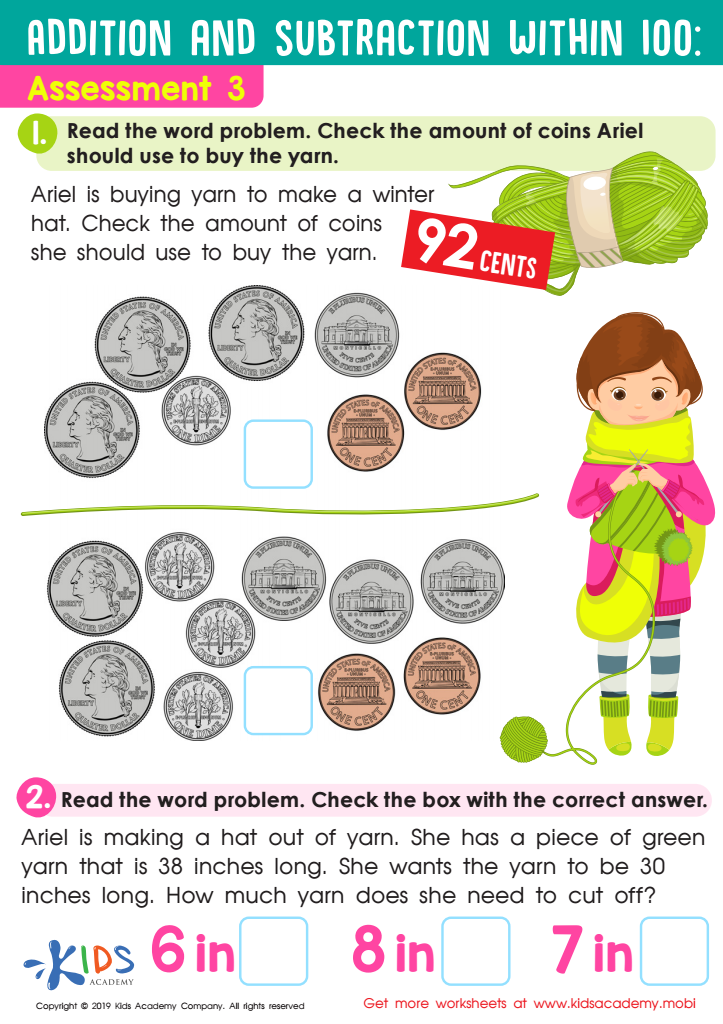Money worksheets activities for Ages 6-7
1 filtered results
-
From - To


Assessment 3 Math Worksheet
Money worksheets activities serve as an invaluable educational tool for teaching children and students about the fundamentals of finance. These interactive activities are designed not only to make learning about money engaging and fun but also to equip learners with essential life skills related to financial literacy. By incorporating money worksheets activities into the curriculum, educators can provide a hands-on learning experience that resonates with the real-world application of money management.
One of the primary reasons money worksheets activities are so beneficial is that they introduce young learners to the concept of currency, budgeting, saving, and spending in a structured yet accessible manner. Through these activities, students learn to identify different denominations of currency, understand the value of money, and perform basic arithmetic operations with money, such as addition, subtraction, multiplication, and division. This foundational knowledge is crucial for developing sound financial habits early in life.
Moreover, money worksheets activities are versatile teaching tools that can be adapted to various age groups and learning levels. Whether it's teaching kindergarteners about coin identification or helping older students calculate taxes and interest, these activities can be tailored to meet the educational needs of all students. This adaptability ensures that learners are always engaged and challenged, fostering a deeper understanding of financial concepts.
Additionally, through the use of realistic scenarios and problems, money worksheets activities enhance problem-solving and critical thinking skills. Students are often presented with situations that require them to apply their knowledge in practical ways, such as planning a budget, making change, or determining the best value for a purchase. These scenarios prepare students for real-life financial decisions and promote financial responsibility.
In conclusion, money worksheets activities are a critical component of financial education. They not only make learning about money interactive and enjoyable but also lay the groundwork for developing financially literate individuals who are prepared to navigate the complexities of the financial world. By incorporating these activities into the learning process, educators can play a significant role in shaping the financial future of their students.
 Assign to the classroom
Assign to the classroom




.jpg)






